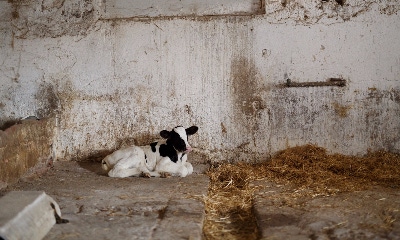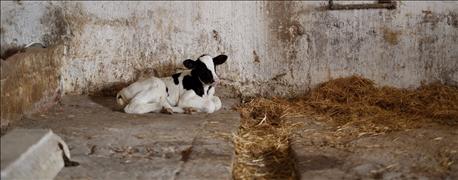
The first step in making money in the dairy business is for farmers to know a cow is with calf. The fact is that dairy cows need to have a calf to produce milk.
To that end, over the years dairy farmers started checking to make sure the cows are pregnant. Most farmers call it a "preg check." Veterinarians call it "pregnancy diagnosis."
Scott Poock, DVM and University of Missouri Extension veterinarian has done quite a few dairy cow pregnancy checks in his time. "I love finding that a cow is pregnant," Poock says in a recent MU Extension news release. "But the way I make you the most money is when I find your open (nonpregnant) cows."

NEED THE CALF: Dairy cows must have calves to produce milk. Early pregnancy checking can determine if a cow is with calf or need to be bred again. (Photo Getty Images)
Learning of a pregnancy early saves the most money. Nonpregnant cows are nonworking cows. "They need to be re-inseminated as quickly as possible," Poock said.
Poock noted the recent progress in preg checks. Dairy farmers do not have to rely on the old ways of breeding the cow and waiting nine months in hopes of a calf being born.
He explains that four advances in detecting pregnancy in dairy cows help farmers make money with their herds.
1. Palpation. The first progress was in palpation. This practice allowed an individual or vet to put on a plastic sleeve and reached in to find a developing calf. The problem according to Poock was that you couldn't tell if a calf is alive or dead.
2. Ultrasound. When the ultrasound was introduced to the dairy industry, it took palpation to a new level. Now the calf that a vet felt could be assessed by video for life. "Very early you can see the beating heart," Poock notes. "A bit later in gestation you see if it is a heifer or a bull." Ultrasound allows earlier diagnosis, as soon as 30 days after breeding. Poock cautions that early detections should be followed with another check. "Up to 15% of early pregnancies are lost to natural causes."
3. Ultrasound devices. Original ultrasound models were huge and moved on a cart. Recent models can be worn on a belt. Instead of looking at a video monitor, Poock sees the calf through "reality goggles." A handheld device connected by Wi-Fi can be viewed by the nearby farmer or student. With the new technology, accurate estimates can be made on the calf's age in days that can offer farmers an expected calving date.
4. Chemical test. The most recent diagnosis tool, according to Poock, is a chemical test. A milk or blood sample is tested by applying a drop into a test kit. The blood sample is then sent to a lab. The milk sample can be tested on the farm. The tests cost the most, ranging from $2.50 to $4.
Whichever way you choose to pregnancy check, it's important to know early whether a cow is pregnant, Poock adds. "Open cows should be re-bred as soon as possible. We want to minimize long lactations where the cow gets fat and not producing well."
About the Author(s)
You May Also Like






